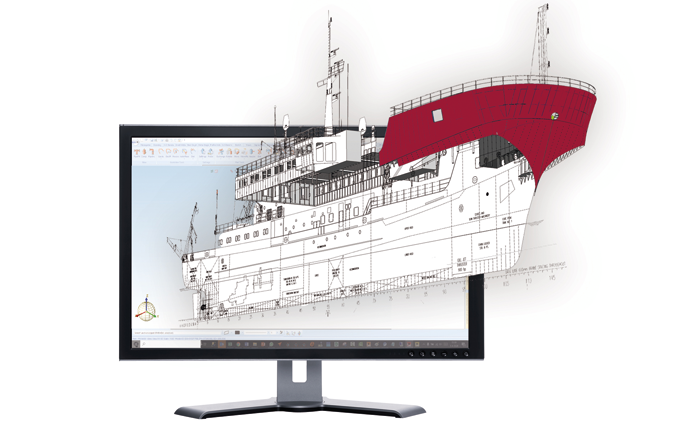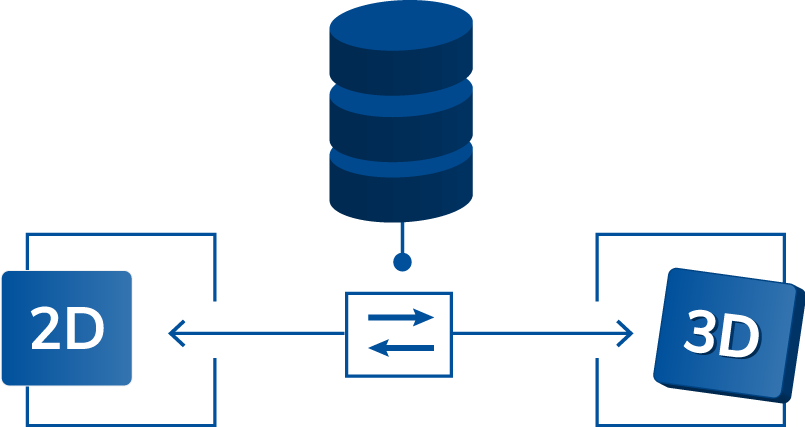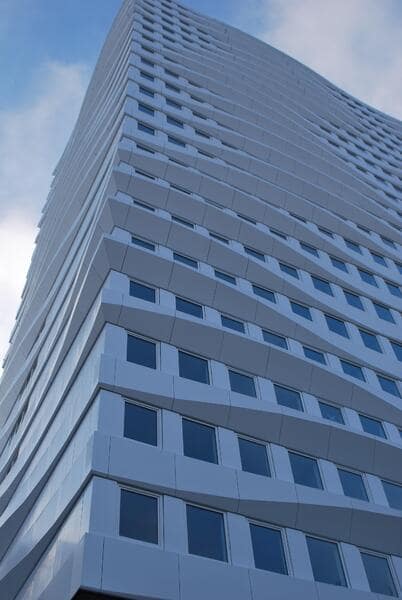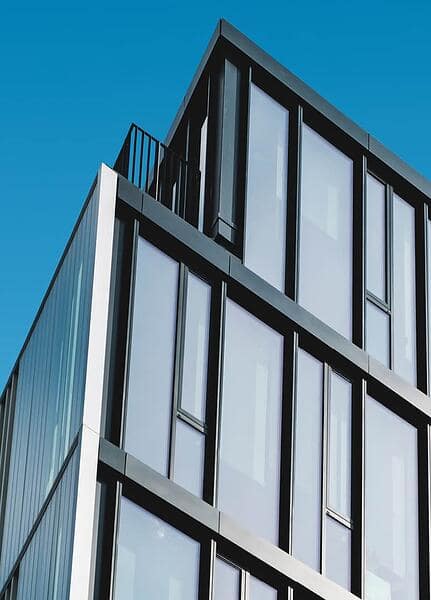
CAD software is essential in the processes of a large number of industries. From metal workers, architects and steel construction companies to product designers, facade construction companies and many other sectors. Find out what CAD software is, what types and features there are, how to choose the right CAD software and more.
Table of contents
CAD Software stands for Computer Aided Design Software. With CAD software, engineers and designers can make drawings and designs with computers. Think for example of a drawing for the construction of a facade, but also a drawing for a coffee machine or even a car. CAD software has an enormous range of applications and is used in all kinds of industries.
HiCAD is the CAD programme of ISD Group. This CAD software is used in various industries such as mechanical and plant engineering, building and construction and product design and manufacturing. With 2D CAD and 3D CAD in one system, a modular structure for perfect adaptation to various industries and a high degree of automation, HiCAD is a unique CAD programme.

Various industries use CAD software. Well-known industries that use CAD software are construction, architecture and product design. A lesser known application of CAD software is in the health care industry, where they use CAD to make prostheses. Or in interior design, where CAD software is used to create a good 3D image of the design. There are many more industries that use CAD software.
Read more about CAD software and HiCAD in various industries!

CAD software can be implemented in various industries within mechanical and plant engineering. Take a look at the industries where CAD software can be used.
Below are the various industries within building and construction in which CAD software can be used.
CAD software is also often used in product design and engineering. Take a look at the CAD software for the different industries below.

Smart CAD software has advantages for each of these industries. Download one of our whitepapers or the checklist to learn more about the advantages of CAD software for steel construction, facade construction and metalworking.
There are two types of CAD system: 2D CAD and 3D CAD. 2D CAD stands for two-dimensional Computer Aided Design and the one for 3D CAD stands for three-dimensional Computer Aided Design.

Are you wondering whether you should choose 2D CAD software or 3D CAD software? 2D CAD software and 3D CAD software both have their own advantages.
The advantages of 3D CAD software:
The advantages of 2D CAD software:

Read more about the advantages of 2D and 3D CAD in one CAD programme here! Or watch the video showing advanced 2D/3D visualisations.

There are many different CAD programmes, each with its own unique features. It depends on the industry which features of CAD software are the most advantageous. Nevertheless, there are also some general functionalities of CAD programmes which are necessary for every industry.
The simpler, faster and more intuitive you can use a CAD programme, the higher your productivity. An additional advantage is that new draftsmen also learn the CAD programme faster if it has a user-friendly interface.
A CAD programme works best if it can be optimally adapted to your company-specific requirements. With an extensive modular structure, you can choose the functionalities that suit you and omit those that have no added value for your company. This way, you get the most out of your CAD programme (and save unnecessary costs). For an example, read this customer story about the HiCAD roof and wall module.
Although 3D CAD software is becoming the new standard in most industries, 2D CAD is still a widely used system which will not disappear completely. The reality is, therefore, that many 2D drawings still have to be converted to 3D and vice versa. Switching between two systems and converting drawings manually is time-consuming and error-prone. By combining 2D and 3D CAD software in one system, you increase your productivity and reduce the margin of error.
However, it is above all the industry-specific CAD functionalities that can make the difference. In facade construction, for example, a link with Logikal, working with point clouds, automatically filling facades with ALUCOBOND® or your own panels, and the ability to work with BIM are essential. As a facade builder, you can save time and avoid mistakes with these handy functionalities.
In the metalworking industry, on the other hand, for example, the automatic conversion and loading of sheet metal offers many advantages and saves time. In steel construction, the essential functionalities again depend on whether the company deals with standard steel constructions such as beams and profiles, or complex constructions such as staircases, fences and balustrades.
The modular structure of HiCAD enables companies from different sectors to choose exactly the functionalities that are important for them. Here you can see a helpful demo video of HiCAD for facade construction, metalworking and steel construction.



Besides the costs of CAD software, another important question is of course what CAD software yields. By working with smart CAD software, you can automate many tasks and perform them more efficiently, which saves you money. Do you want to know your Return On Investment when purchasing CAD software? Then make use of our no-obligation ROI calculation!


Choosing a new CAD programme is a big decision for many companies. These do's and don'ts when looking for new CAD software will help you on your way.
